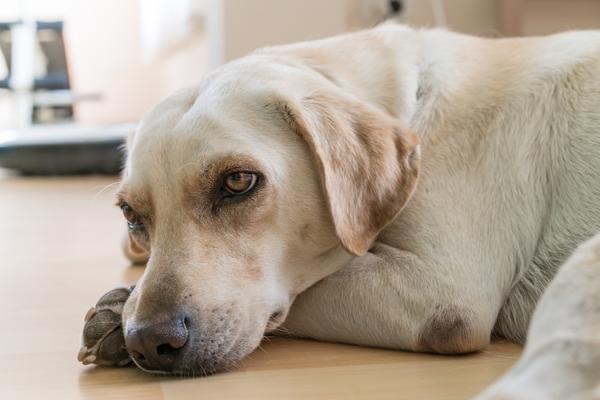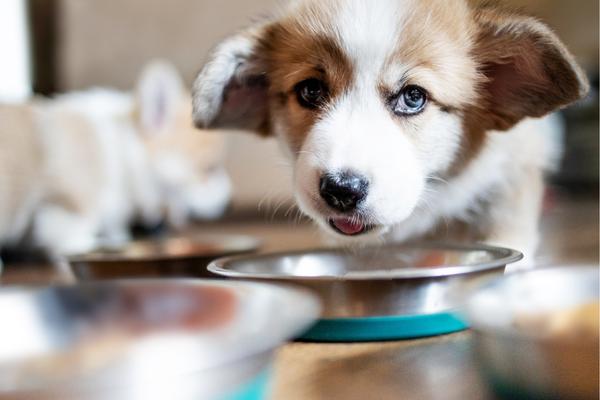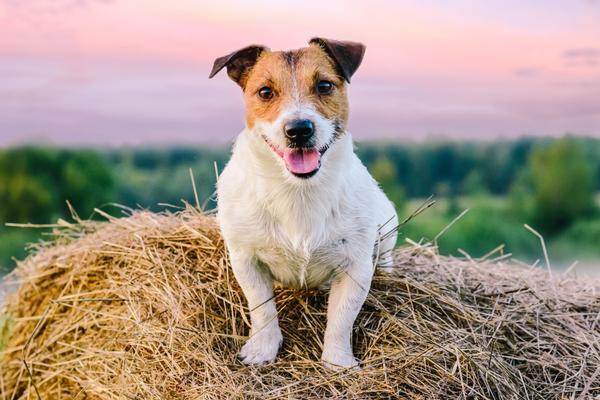You seem to be at a dead-end, your precious pooch has been feeling low for months, but you can’t figure out why. This is where your vet may suggest a grain allergy in dogs could be the reason. Feeling puzzled? What does a dog grain allergy even look like?
Allergies are increasingly common in dogs. The main triggers include meat/food, environmental factors, and of course, grain. Each of these has common symptoms and can leave your once lively best friend feeling sorry for themselves and glum, to say the least!
To put an end to your bow-wow’s suffering, I’ve put together a list of dog grain allergy symptoms. Let’s see if any of these sound familiar to you…
Grain Allergy in Dogs Contents
Dog Grain Allergy Symptoms
What Does a Dog Gluten Allergy Look Like?
What Grain-free Food Is Best?
Dog Allergy To Grain FAQs

As owners, the well-being of our pals is essential. However, it would seem we may need to pay closer attention. It has recently come to light that as dog breeds have evolved, so have their sensitivities to a whole manner of things.
Food allergies can be a pain. Many dogs nowadays are showing signs of intolerance to ingredients you would find in regular dog food. From gluten, wheat, soy, and grains our furry family members could be suffering, so it’s super-important we know the signs to look out for.
Skin Irritation
This has to be the most noticeable symptom — irritation on your dog’s skin. Treatment will be offered by your vet and they may suggest that you could have a dog allergic to wheat or grain.
Keep an eye out if your dog is scratching more often or has noticeable flakes/scabs on its skin. There also may be areas of hair loss due to stress, constant scratching, or excessive licking.
Frequent Ear Infections
Watching your dog suffer from ear infections can be a trying time. If your dog is scratching its ears or pawing at them, take a look. Their skin should be cool to touch and normal in color. If their ears seem to be inflamed and sore then you may be facing an ear infection. If these are becoming more frequent, it could be an indicator of a grain allergy.
Digestive Issues
This is probably the most common sign you will notice if your pal is feeling under the weather. We’ve all been there, eaten something that doesn’t agree with us, and hey presto, we pay for it a few hours later. The same applies to our furry friends.
If they have an intolerance to wheat or grains, it generally presents itself as diarrhea, vomiting, or the need to poop more often than usual.
Affected Anal Glands
Keeping on the butt theme. From time to time, your dog may need its anal glands drained. This can be completed by a vet, groomer or if you’re brave enough you can attempt this yourself.
If your pet is seen to be dragging their bottom, it’s an indicator their glands are full, and they haven’t managed to drain them while pooping. This could be down to their stools being too soft or constipation. It could also be a sign that your dog has intestinal worms.
Frequent draining can point to an issue in their food. Grain intolerance can be to blame.
Difference in Behavior
You and your furry best friend have a bond like no other. Many animals naturally become the fur-babies of the family, and just as you have to with children, you need to listen to your gut instincts.
Our furry friends can’t tell us they are in pain, which can become difficult when you’re thinking there could be a dietary issue.
Hence, monitor their behavior, and if you feel like they are acting differently — whether that’s more erratic or lethargic, it could mean it’s time to question if a grain-free diet should be on the cards.
In order to find the best treatment for your dog, it’s essential to determine what could be causing their symptoms. A gluten allergy in dogs can be rare, but it’s not out of the question. If you find that your canine companion is feeling miserable or acting out of sorts, your vet may suspect a gluten intolerance.
Gluten is a wheat product that’s contained in many dog foods, thus it can otherwise be described as a wheat allergy. A gluten/wheat allergy in dogs can be difficult to diagnose, but the best way to identify it is by eliminating all forms of wheat/gluten from your dog’s diet.
However, a gradual change is suggested, not a straight swap. Changing your dog’s diet in a drastic manner can cause an upset tummy, which confuses their allergy symptoms with their system adjusting to their new diet.
Grain allergy and dog wheat allergy symptoms are similar, so, refer to the signs above and discuss the best course of action with your vet.
Once the gluten/wheat has been eradicated from your pals’ diet you should start to see an improvement in symptoms. That said, if these issues persist, your vet may suggest a blood panel to find out if there are any other illnesses to consider.

Typically your dog can develop a grain allergy at any point in its life, but it usually starts before your dog turns 12 months old.
Yet, the good news is that many pet stores offer grain-free foods. Hence, whether you feed your beloved pet wet food or kibble, there is bound to be a brand that suits you and your dog.
Here are a few poochie pointers:
- Grain-free foods can cost more, so you may wish to factor this into your decision-making.
- When choosing a grain-free food, avoid anything containing — wheat, rice, oats, soy, barley, and rye. Foods that state ‘grain-free’ may substitute the grain with other carbohydrates, such as sweet or regular potato.
- You may need to alter your dog’s portion size as sometimes these foods contain higher carbohydrate ratios.
- Don’t confuse gluten-free and grain-free — they’re different. Ensure you understand what needs to be removed from your dog’s diet — check out this guide to the best hypoallergenic doggie food.
- Try to avoid switching their diet too often.
Conclusion
We’ve explored the signs and symptoms of a grain allergy in your dog, now you know what to watch for.
If you have suspicions, seek advice from your vet. And remember, as soon as the intolerance is diagnosed, you can begin to alter your dog’s diet and think about having your loving furry friend back to normal.
Early detection is key, and while, unfortunately, you can’t prevent these allergies, hopefully, we’ve helped you see there is a way that a grain allergy in dogs can be successfully managed.
“What Grains Are Dogs Most Allergic To?”
Dogs can be allergic to many ingredients. Grains are not as common as most allergies, and in fact, the most common allergy in dogs is beef. However, if you have a dog allergic to grain, the main culprit is known to be wheat.
“How Do I Know if My Dog Needs a Grain Free Diet?”
If your dog displays any of the following symptoms, seek advice from your vet before changing their diet. These symptoms could also be from other allergies:
- Itchiness.
- Sores and scabs.
- Inflamed skin.
- Bald patches.
- Excessive hair loss.
“Is Wheat Harmful to Dogs?”
Many dog foods contain wheat, and if you feel that your dog is perfectly healthy, you may continue to feed them their usual diet. Wheat is considered safe to feed to your dog. The only time to look closer at your dog’s diet is if they’re displaying any intolerance symptoms.
“Do Dogs Need Grains in Their Diet?”
Grains are known to benefit a dog’s natural diet. They can be an excellent source of carbohydrates, fats, and antioxidants. All these contribute to healthy development in your dog. You should only remove it if you have a dog allergic to grains.
“Is a Raw Food Diet Grain Free?”
Feeding your dog a raw food diet can be grain-free. Essentially you’re feeding them what nature intended. Raw food typically includes meat, organs, and bone. This is seen as a high-protein diet with fewer or zero grains or carbohydrates. These nutrients can be added alongside your dog’s meal.
“What Are the Symptoms of a Grain Allergy?”
There are a few symptoms of a grain allergy, such as
- Hives or an itchy skin rash.
- Diarrhea.
- Vomiting.
- Ear infections.
“What Do You Feed a Dog With a Grain Allergy?”
If your dog has a grain allergy, you will need to feed them a high-quality complete grain-free food. There is a greater variety of these available now more than ever before.



